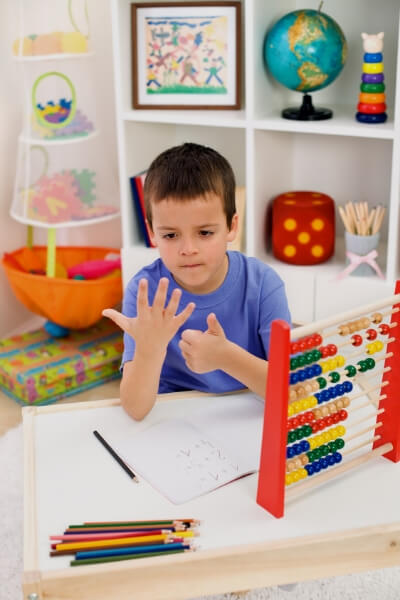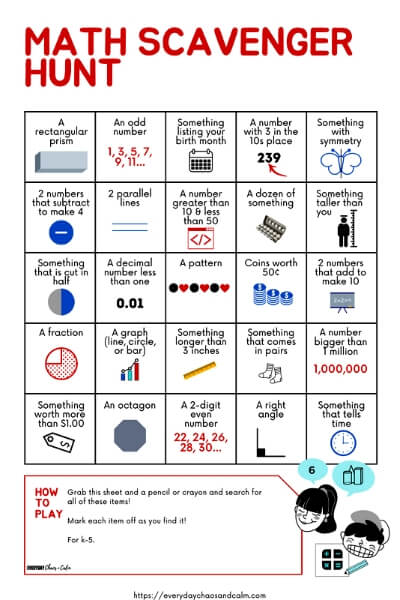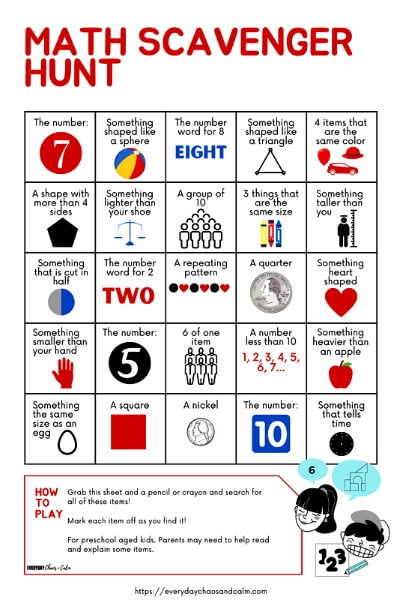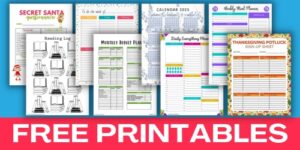Looking for a fun, hands-on math activity to help solidify mathematical concepts? Host a math scavenger hunt for the kids and make learning fun!
Math can seem very abstract to kids and many grow up learning to hate math. But in actuality, math is all around you.
** This website contains affiliate links. If you make a purchase using one of these links, I may earn a commission. Please click here for more information about cookies collected and our privacy policy **.
From shapes, to time, to money, to adding, to measurement. Math exists throughout the world!
If you child is having trouble grasping math concepts, or maybe you are just looking for a fun math activity to make learning fun- try having a math scavenger hunt!
The kids will think it’s a game, when really they are learning all sorts of math as they play.

How to Do a Math Scavenger Hunt for Kids
First, you need to gather supplies. Luckily there’s not a lot of supplies or prep needed. All you need is:
- A scavenger hunt list (more on this below)
- A pen or crayon
- Optional: a basket or bag to collect items or a camera to take a picture of the finds
That’s all you need!
** Note: Depending on your list, you may need to bring additional supplies such as a ruler for measuring.
Next, you should decided on WHERE you will do your math scavenger hunt. There are tons of options, such as:
- In your home
- In your backyard
- At a park
- Exploring downtown
- At a museum
- Throughout your neighborhood
- In a magazine
Just do a quick glance over your list before starting to make sure you can complete most of the items without too much trouble in your chosen area.

What to Include in a Math Scavenger Hunt
So what kinds of things should go on a math scavenger hunt list? Here are just some of the math principles you can include:
Items for Young Children (Preschool-Kindergarten)
Numbers: Young kids are just learning to identify numbers, so definitely include some of the numbers 1-10 on your list!
Number Words: Number words are an important part of early math skills. Include some on your list.
Shapes: Basic, 2-d shapes are good to include. Think square, circle, triangle, etc.
Number Sets: To help solidify counting, include some number sets on the list. ie. Find 6 of one item
Patterns: Patterns are a very abstract concept for young kids. Include some patterns on your list. Such as color patterns, shape patterns, or number patterns.
Money: While counting money and money value may come later, coin and money identification should be on the list for young kids
Comparisons: Things like bigger/smaller, less/more, etc. ie. Find something smaller than your hand or something heavier than an apple.
Also consider doing themed scavenger hunts. Such as a shape hunt, a number hunt, a number word hunt, a money hunt, etc.

Items for Elementary Age Children (K+)
Shapes: Include more advanced and geometric shapes such as rectangular prism, sphere, equilateral triangle, etc
Numbers: Depending on the age of the child, you can include all sorts of numbers such as millions, decimals, even/odds, etc.
Counting: Think about adding in groups such as dozens, groups of 10, skip counting, etc.
Place Value: Place value can be very confusing in the beginning. Add in some place value tasks, such as find a number with a 2 in the tens place or 1 in the hundreds place.
Geometry: Add geometric concepts such as parallel lines, perpendicular lines, concentric circles, right angles, etc.
Money: A specific amount of money, a set of coins, a price tag with a cents or dollar sign.
Measurement: Provide a ruler and ask for exact measurements or even perimeter or area. Use both standard and metric measurements.
Fractions: You can list to find fractions (ie. 1/2 off!) or to find a fraction of something (ie. half eaten pizza)
Addition/Subtraction: Ask them to find a written number problem or something that represents a problem. Such as a dozen eggs missing 2 eggs can be represented as 12-2=10. You can also ask them to find 2 numbers with a specific difference or sum.
Time: Both in terms of hours and minutes on a clock and dates (days of the week, months, etc)
A scavenger hunt is also a great way to introduce and explain new concepts in a fun, no pressure way!
Printable Math Scavenger Hunt Sheets for Preschool and Elementary Ages
You can make your own list for you math scavenger hunt, but if you don’t want to DIY, here are 2 different scavenger hunt sheets to try.
One is for preschoolers and one is suitable for elementary aged kids.
To use these sheets, simply click on the images below to download and print for your own use.
ELEMENTARY AGE MATH SCAVENGER HUNT SHEET:
PRESCHOOL MATH SCAVENGER HUNT SHEET:
Just print them out and enjoy!
Looking more learning fun? Check these out next:
Free Multiplication Charts & Wheels
7 Math Centered Candy Heart Activities for Young Kids
DIY Race Car Counting Game for Preschoolers
How to Make Dancing Popcorn (a Science Activity)
Knockout- A Fun Addition Game to Learn the Facts!
How to Do a Nature Scavenger Hunt for Kids (of All Ages!)




